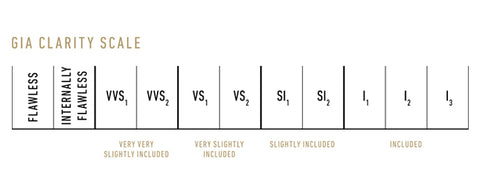It’s hard to resist when you stroll by a window and a stunning lab-grown diamond calls your name, but it’s essential to walk through a mental checklist before purchasing on a whim. The number one rule is to never settle for mediocrity. When searching for your lab-grown diamonds, there's more to consider than what catches your eye.

Like a human fingerprint, every diamond has certain distinguishing characteristics. In the 1940s, the founder of GIA, Robert M. Shipley, coined the term 4Cs - Cut, Color, Clarity, and Carat - so his students could evaluate diamonds with an agreed-upon standard. Now these standards are globally accepted for assessing the quality of a diamond. So, we put together a guide explaining the 4Cs of Diamond Quality to help you become an informed lab-grown diamond shopper and know exactly what you're purchasing. Your diamond price is dependent on these factors, and with some careful juggling, you can get the ideal stone for your budget.
Cut
The way that light interacts with the facets of a diamond will determine its sparkle. So, a diamond with an excellent cut will have more fire and will direct more light through the crown while one with a poor one will seem dull and will allow light to escape through the sides or the bottom of the stone. We always recommend an excellent cut diamond!
Color
Diamond Colour can range from D to Z, an icy white colorless to a light yellow, with D being the more appealing end of the spectrum. A D colour, the colorless color, may increase the price of the diamond exponentially while the Z color, the yellow color, is the least expensive. We recommend an excellent cut along with a G, H, I, or J colour, depending on the budget. Also, telling the difference from one color grade to another color grade can be difficult so it's important to compare diamonds side by side.

Clarity
Mined Diamonds can have tiny markings, black flecks, or striations in them called inclusions. GIA created a diamond grading scale to help consumers understand what makes one diamond worth more than another. Lab-grown diamonds naturally (ironic choice of word, we know) have better clarity than mined diamonds that have spent millennia in the ground. From Internally Flawless (IF) to Slight Inclusions (SI), there is a spectrum to clarity as well. It’s safe to go with Very Slight Inclusions or Slight Inclusions.\

Carat
The crucial one for the naked eye is the carat weight. How Big Is That Rock? Fret not. You can always go bigger – it’s simply about whether you want to choose a mined diamond or a lab-grown one. Just remember which one is easier on the pocket and better for the environment.
The Most Important ‘C’
The most important thing you need to consider when buying your lab-grown diamond is to choose only certified diamonds and jewellery with hallmarking. The certifying authority should be an autonomous, trusted entity like “GIA” or equivalent.
When grading diamonds and providing certifications, laboratories look for precise items when searching for inclusions and evaluating clarity, some of them are the color, number, size, nature, and positioning of the inclusions. The process involves independently grading the diamonds wherein the individual grades are compiled and analyzed to determine the final grade. As an informed buyer, it is important to always ask for certification during your purchase to make a conscious choice. This is proof enough that you’re getting what you have been promised.
Now you know what to look for, in regards to shopping for your lab-grown diamond. Lab-grown diamonds are environmentally conscious, ethical, and 100% conflict-free, hereby making your purchase a smarter one. Lab-grown diamonds signify a modern love and an incredible movement in the crafting of conscious jewelry. The significance of a diamond is the love it represents coupled with an informed choice which makes the experience of the purchase even more significant.

